If you regularly shave, you may find yourself experiencing red itchy bumps on your skin, sometimes more often than usual. They can be quite unpleasant, especially if you shaved for a special occasion, like a date or an important meeting.
Old recommendations called for infrequent shaving with single-blade razors. This was due to increased inflammation that could be caused by multi-blade razors on a daily basis. Now, more recent data suggests new recommendations which call for exactly that: daily shaving with a multi-blade razor.
Does shaving cause acne, and if so, is there anything you can do about it? Those are the questions I’ll answer in this post.
Does Shaving Cause Acne?
Shaving may increase the risk of acne and razor bumps due to irritation on the face. Inflammation and razor bumps can be caused by different factors such as improper shaving routines and irritating shaving products.
How Can Shaving Cause Acne?
It is true that acne and inflammation may be caused by modern multi-blade razors. When you shave with multi-blade razors, the first blades cut the hair above the skin line while the following blades cut the hair below the skin line. This is how you can get that smooth shaven feel that everyone knows and loves.
However, the problem occurs when the skin grows over the shortened hairs. When the hairs grow back, they will have to push through the skin causing an ingrown hair. Repeated irritation on the skin can lead to a bumpy appearance (hence the term, razor bumps).
Updated Study On Shaving And Inflammation
Despite the previous risk of razor bumps, a study from the International Journal of Cosmetic Medicine recommends shaving regularly (daily, if possible) with an advanced multi-blade razor. Using the right moisturizing pre- and post-shave lotions along with this routine may help reduce ingrown hairs and acne. Out of 90 men in their study, those who maintained a daily routine with a multi-blade razor experienced less irritation and inflammation than those who only shaved two to three times per week with a standard razor.
Though “razor bumps” is not a proper medical term, a skin condition called Pseudofolliculitis barbae (PFB) closely matches the signs and symptoms of razor bumps. The previous study suggests that PFB and razor bumps are more common in men of African origin. However, overall research in this area is scarce and anyone, irrespective of their ancestry and sex, can experience razor bumps.
How To Prevent Acne After Shaving – Ultimate Shaving Guide For Acne Prone Skin
Pre-Shave Routine
One of the best ways to minimise the risk of ingrown hairs and irritation is to have a hot shower and exfoliate the skin. Exfoliants come in two forms – mechanical and chemical. A chemical exfoliant is far too harsh on the skin for this purpose and is likely to cause damage immediately before shaving – not something you want.
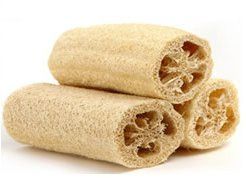
Instead, stick to a mechanical exfoliant (such as a loofah) to remove any dirt and dead skin cells. The combination of hot water and light exfoliation opens up the pores and helps the hairs stand upright, ready for an irritation free shave.
During The Shave
Lather up well – ditch the canned shaving cream. The majority of shavers use pressurised shaving cream from a can, mainly because you can simply pull the cap off and press the button for an instant lather. These creams are popular because they’re convenient and readily available in shops (they’re more profitable for the pharmaceutical companies). However, this does not mean they’re the best products.
Canned shaving creams contain isobutane/propane along with preservatives that you don’t want to come into contact with your skin (especially if you’re prone to irritation). Instead, consider purchasing an all natural shaving soap. Utilize a shaving brush for a more complete lather.
While shaving soaps contain less chemicals, the process of applying the lather with a shaving brush helps the hairs stand up and the cream to get beneath. You’ll be amazed at the difference this one change can make to your shaving routine.
“Multi Pass” Shave
When shaving with a safety razor, it’s recommended that you do a two or three pass shave (depending on how close you want your shave to be). The idea is that each pass reduces the length of the hair, rather than aggressively taking off the complete hair in one pass.
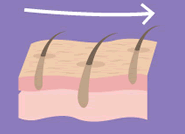 The first pass is “with the grain” (this means that you follow the direction of hair growth), the second pass is across the grain, and the final pass (optional) is against the grain. If you suffer from severe irritation, then you may want to skip the final pass.
The first pass is “with the grain” (this means that you follow the direction of hair growth), the second pass is across the grain, and the final pass (optional) is against the grain. If you suffer from severe irritation, then you may want to skip the final pass.
Post-Shave Routine
There are two very common reasons for irritation during shaving – tiny infections underneath the surface of the skin (often triggered by ingrown hairs) or excessively dry skin. A post shave routine should combat both of these scenarios. A typical “sensitive skin” post-shave routine would be:-
- Rinse with warm / hot water
- Rinse with cold water (to close the pores)
- Apply some witch hazel toner (has great anti-inflammatory properties)
- Apply moisturiser (read this post for a complete guide on how to choose a moisturiser)
Gear Recommendations
Using proper shaving techniques is only one part of the equation to reduce inflammation and irritation. It is also important to use the proper tools. While these tools are primarily up to personal preference, some products may contain components that can influence your risk for acne.
Pre-Shave Products
Use a cleanser before and after your shave to ensure that your skin remains moisturized and dirt free. The best product to use before a shave is one that has a low lather, cleans well, hydrates, and rinses easily before a shave. For example, NIVEA Face Wash can be used to remove oil and dirt before a shave. It also contains Aloe vera which may exhibit anti-inflammatory benefits to reduce acne.
Shaving Cream
There are not many studies comparing the use of different shaving creams for acne. However, as mentioned before, many canned shaving creams contain preservatives which can irritate the skin. Therefore, it is best to stick with natural shaving creams and soaps.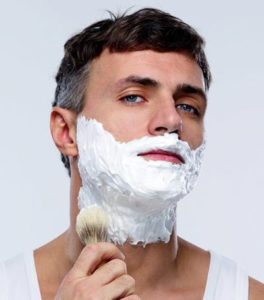
Many natural shaving creams and soaps contain a glycerin base with aloe vera or coconut oil. While glycerin has been studied to increase moisture in the skin, it may irritate the skin further in some individuals. It may be best to test out different products for this reason.
Some shaving lotions and creams are marketed towards skin sensitive shavers. Some shaving creams such as Neutrogena’s Skin Clearing Shave Cream contain surfactants, which are believed to more effectively remove dirt and oils that can cause acne. Again, these surfactants may be irritating to some individuals.
Electric Shavers And Razors
Option 1 – Use an Electric Shaver
Electric shavers usually don’t shave as close to the skin as blades do. So they don’t cut the hair below the skin line.
Foil vs Rotary – Which is Better for Sensitive Skin?
Electric shavers can be separated into two groups – “foil” and “rotary”. The image on the right shows the bottom of a foil electric razor.
Foil shavers contain a thin layer of metal that covers the blades, making it more gentle for sensitive skin. They also have the added benefit of giving a closer shave than the rotary alternative. For acne prone, sensitive skin, a foil electric shaver will likely be the best choice for you.
Option 2 – Use a Safety Razor
Safety razors are what most people used before the invention and mass marketing of the modern day multi-blade razor. These razors use double edged blades that you can insert into the head of the razor.
Despite the name, only one edge of the razor comes into contact with the skin at any one time. Once you have performed a number of strokes with one edge, you can flip the razor and shave with the other edge.
These blades have the added benefit of being extremely cheap (you can get 100 blades for around $15 and each blade lasts a good five shaves) and many people report that switching to this style of shaving completely eliminates the irritation that they previously had with cartridge razors.
Choose a Blade that’s Right for Your Skin Type
One of the advantages of shaving with a safety razor is that you have more than 82 brands of blade to choose from – each with its own degree of sharpness. Shavers who are acne prone tend to sacrifice a degree of sharpness in order to get a more comfortable, smooth shave. Derby blades are generally the best blades for smoothness while still maintaining a decent close shave. Use this blade to begin with if you have average beard growth.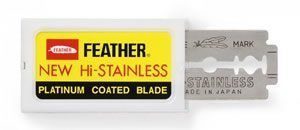
If you have a thick, dense beard, then you may need to look into using a sharper blade so that the hairs are being cut instead of pulled. Feather blades are notorious for being the sharpest on the market – these blades can slice through the densest of beards without any downwards pressure and thus less irritation.
If you’re unsure which blade is right for you, then you can pick up a blade combination pack from Amazon or from tryablade.com. It’s best to test them out until you find the best one for you.
Aftershave Products
To help prevent razor bumps and acne after shaving, you can try applying an antibacterial gel or toner to help kill any bacteria in the skin. This can help reduce inflammation caused by bacteria getting into your pores. Products with salicylic acid or benzoyl peroxide can also help reduce bacteria and exfoliate the skin. After a shave, a lotion containing witch hazel or argan oil can be helpful to reduce inflammation and moisturize the skin.

Glycolic Acid
Studies also suggest the use of glycolic acid as a way to reduce inflammation from razor bumps. In a placebo controlled study, results showed a 60% reduction in lesions and irritation in the treated group as opposed to the control group who did not use glycolic acid. In this way, products containing glycolic acid may be effective before or after shaving to further reduce inflammation.
FAQ: Shaving And Acne
Can Shaving Help Your Acne Get Better?
Shaving with a proper shaving routine may help reduce inflammation and irritation from acne. Using a pre- and post-shave face cleanser can ensure a smooth shave without acne. On the other hand, shaving without the right tools and moisturization can increase the risk of acne and razor bumps.
Can Having A Beard Cause Acne?
Having a beard does not directly cause acne. Acne is caused by dirt and bacteria that become entrapped in hair follicles. Therefore, a beard that is not kept clean and moisturized may contribute to acne.
Is It Bad To Shave Every Day?
New recommendations suggest that it is actually beneficial to shave every day. This is especially true if you are going for a clean shaven appearance. Shaving every day may reduce the occurrence of ingrown hairs which can contribute to inflammation, acne, and razor bumps.
Should I Shave If I Have Acne?
You can shave if you have acne. Use an appropriate shaving cream or lotion to lubricate the skin for shaving. It is important to follow a pre- and post-shave routine to clean and moisturize the face and prevent irritation.
Is It Bad To Cut A Pimple With The Razor Blade?
It is best to avoid running a razor over a pimple. Cutting it may release bacteria into other freshly shaved areas of the skin. Make sure to clean the cut area to prevent possible infection and more acne.
Does Shaving Against The Grain Damage Skin?
Shaving against the grain does not directly damage the skin depending on the technique that is used. While it may provide a more close shave, it could increase the risk of ingrown hairs and inflammation. If you shave against the grain, use proper shaving cream for appropriate lubrication.
Electric Shaver Vs Razor For Sensitive Skin?
Generally, electric shavers can benefit those with sensitive skin. This is because there is less risk for cutting below the skin and thus, less irritation and ingrown hairs. Razors, on the other hand, have a higher potential to nick the skin or cause irritation.
Do Single Blade Razors Cause Less Irritation?
From a technical perspective, a single blade has a lower risk of cutting below the skin line to cause an ingrown hair. This is because there is only one blade running against the skin at one time. The entire shave routine should be taken into account to assess irritation.
When Is The Best Time To Shave?
There is no definitive time of day that is best for shaving. It may be best to shave after a shower when you have removed excess dirt and oil from the face. Warm water can also soften the hair and prepare the face for a smoother shave.
Can Beard Products (Beard Balm, Beard Oil) Cause Acne?
If the beard product contains any pore clogging oils, then it can cause acne. However, beard balms and oils are designed to moisturize the skin underneath the beard. Products that contain tea tree oil also have antibacterial properties to improve acne.
The Main Takeaway
In summary, it’s important to utilize safe and effective routines and techniques for shaving to prevent skin irritation. If you take anything away from this post then it should be this:
- Always follow a pre-shave routine that includes softening the hair with warm water and removing any lingering dirt or bacteria
- Cartridge multi-blade razors on a daily basis are now recommended for acne prone, irritable skin. If you currently use a cartridge razor and suffer from irritation, it may be best to switch to an electric or safety razor – test out different razors to find the one that suits your skin!
- Use a natural shaving cream or soap without preservatives to reduce dryness and lubricate the skin for a smooth shave
- Follow a post-shave routine that includes a moisturizing toner with witch hazel or argan oil. Glycolic acid may also help reduce acne inflammation from shaving.
Do you suffer from acne as a result of shaving? What have you found that works for you? Let me know in the comments below..

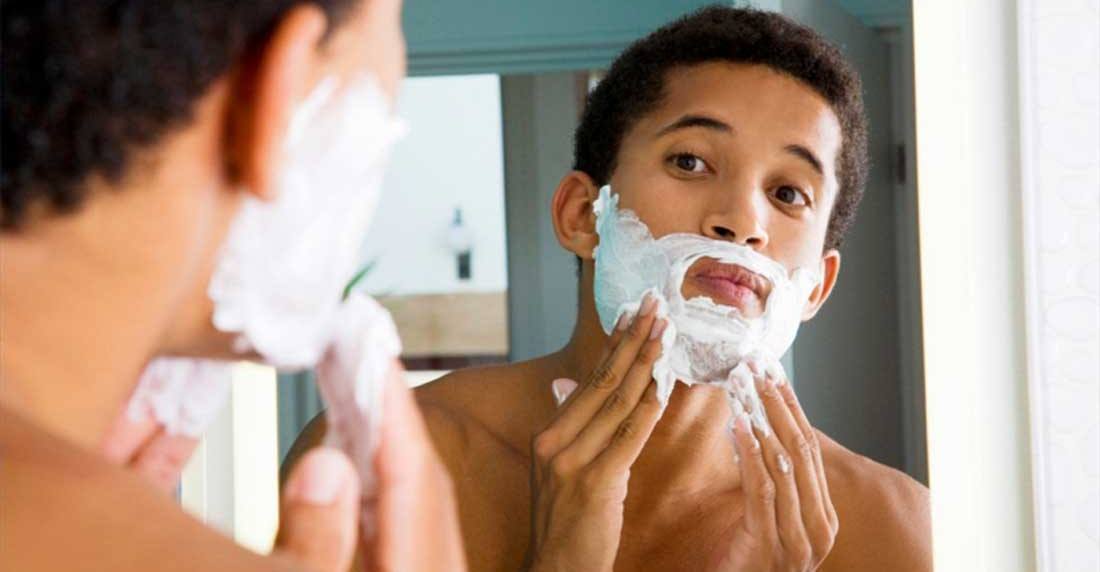

ahhh. my acne is to certain point is bad, during the winter/coldweather like now, it just gets worse and worse and worse. the summer its not bad at all. this morning i got up and shaved, the bad thing that happened, my skin got really dry. I got a moisturizor, but i thought twice on it, it clogs my poors from time to time, which it is not suppose to do. i need advice. This was my routeen. when its time for bed, i would either take a shower (3-6minutes) get done with it, pat dry, go to my room, get my acne wash and moisturizor and wash than apply it. go to sleep with my face feeling extra soft, and waking up with a clogged poor…
Dear friends! I fully agree on what is said about nulti razors/ 77 blades system. Get an old fashion safety razor and a brush with a quality cream, follow up with a balm. Do not drink milk products and let your face rest for 3 days without washing. It will make a difference baby!
Hi Seppo!
Very good post! I personally like to wash my face twice a day in the morning and in the evening and finish up with cold splashes of water to rinse after I shave. This has been very effective for me. I also use less oil based products as I find that they clog the pores and cause more acne.
Paul, great information for many of us who have been trying to find relief while shaving. We would like to also add our voice when it comes to using a safety razor.
When shaving with a common 5-blade razor, it is bound to irritate due to the aggressive method on the skin, as you mentioned. A safety razor has no need for an aggressive style, but a light touch as it is using one blade to get the job done. What this means is that your skin isn’t being attacked by the blades, but rather softly removing the hair from the skin due to one blade.
If you were to get into the routine, you will find that shaving is actually quite enjoyable and breathe new life into something that you would be tired of. We hope that many of you are able to use the methods provided in this article to help with current shaving dilemmas.
For me preshave and after shave products are a must, as if I avoid them even once I get red skill all over my throat for next few days. Also any advice would be nice on how to make a new straight razors less sharp after the purchase, as I make a lot of cuts when I use them for the first time. Cheers from Estonia!
I have acne or razor bumps on my legs and it just started this year. It is weird I never thought that could happen. They don’t look like razor bumps, it is literally pimples. I hope that they go away.
Hi please help i want to try a new a new shaving method i am thinking of an electric shaver. I am currently using gillet march 3 turbo en yes i break out wid small white pimples after. Recently on my face i got two absess that came out the doctor said it is because of my shaving not sure if its true. I get very oily skin and im scared that the absess is going to return please help me. I shave in an upwards position to get a very close shave.
Sounds like it could be from shaving. Try switching to a safety razor (single blade) or an electric shaver.
Hi,
After reading your article,i want to know,why after shaving my face with electric clean shaver (cheap one), i get lots of lots of pimples on my face. And they are not ordinary pimples, they are extremely red and are filled with fluid and puss. After popping the pimples, i put the cream that contains “Fusidic Acid & Betamethasone”. After applying this cream, the pimples go away within 2-3 days.
My question is still “Why i get lots of lots of pimples on my face after using the cheap electric clean shaver.
Maybe the pimples aren’t caused by shaving. Shaving usually causes razor bumps, which are quite different from the kinds of pustules you described.
Hi..
I was initially using Gillete Mach 3. I was not happy with the quality of shave. So I changed over to electric rotary shaver two years back. I keep getting pimples after shaving with electric shaver. Now when I went back to normal razor, i am unable to get a close shave.It looks as if I am unshaven. I am tired of electric shaver. Any tips for going back to Mach 3 smoothly?
Grow a beard 🙂 But seriously, there’s not much you can do about this. The closer you shave, the more likely it is that you’ll get razor bumps.